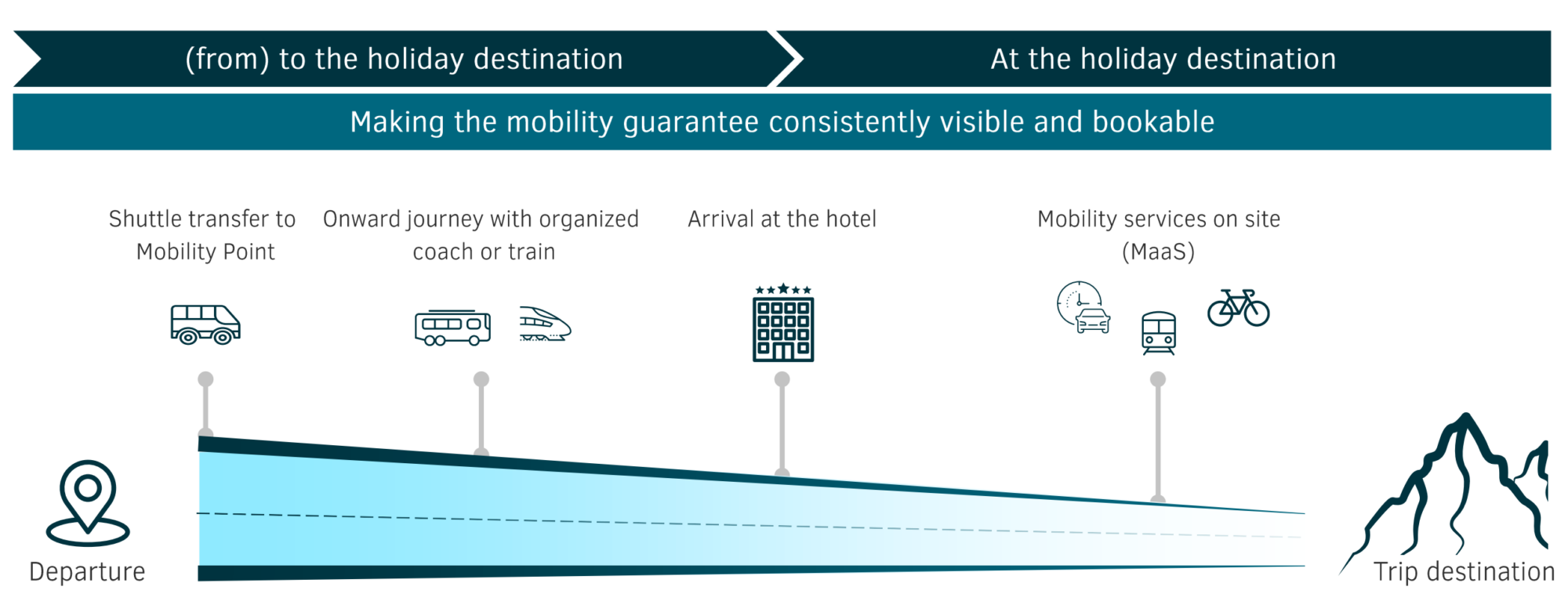In light of the IPCC assessment, there is a need of urgent action towards sustainable and multimodal travel modes to reduce greenhouse gases related to cars. In a T-Mona Study, the Austrian National Tourist Office points out that about 83% of guests chose to arrive by car to their Austrian holiday destination. This figure adds to the mounting pressure to tackle climate change.
On Wednesday, November 3rd 2021 the Travel Industry Club Austria invited accilium to the APA Press Center in Vienna to share our idea on sustainable and multimodal travel modes for the tourism sector in Austria. First, we have shown that according to the greenhouse gas balance of all polluting sectors in Austria, the transport sector is the second highest polluter with 30% of greenhouse gas emissions.
3 high impact levers as a solution approach
Within the tourism industry, accommodation providers and tour operators can create multimodal mobility services along the tourism travel chain to reduce car related greenhouse gases. Central to these services is a booking platform which provides transparency and booking options for guests. At the event we illustrated our idea in an example of how guests could arrive to an Austrian holiday destination in the future:

The first potential in reducing car related greenhouse gases lays within the inspiration phase. This potential can be fulfilled with a transparent booking platform which offers seamless multimodal transportation from departure to the booked accommodation and at the holiday destination region. “Today, digitalization and new mobility services make it possible to shape tourism mobility of the future industry-wide in a climate friendly way”, Oliver Danninger, Partner and Lead Sustainability at accilium explains. A further point which was highlighted, is the need for analyzing the tourism travel chain regionally and internationally in order to develop cooperative multimodal mobility services in a purposeful way.
The design spaces: Individual, Regional, National
Along the tourism travel chain, an accommodation provider or tour operator can create new multimodal mobility services within three design spaces. Whereas the individual design space comes along with high innovation potential:

Accommodation providers primarily shape the individual design space through the development of innovative multimodal mobility services. Multimodal mobility services include shared electric cars or bikes, shuttle services or electric charging stations. The individual design space is the starting point of attracting guests with new services which can be booked throughout the whole holiday. The regional design space is best described by one word: cooperation. Within the regional design space, Destination Management Organizations (DMO) take the lead. Together with main stakeholders within a region, destination networks combine the offerings of different accommodation providers, cable car companies and other player’s within the tourism industry (e.g. sport rental shops). As a result of these cooperative destination networks, shared shuttle services, shared electric car fleets or collaborative rentals of sports equipment and luggage services can altogether help reducing traffic and car related greenhouse gases. These services can increase the comfort and flexibility of guests as a positive side effect. While creating new multimodal mobility services, certain needs may arise which can’t be dealt with alone or within a cooperation. For example if public infrastructure needs to be extended or public transport companies are needed to engage in offerings (e.g. mobility cards for holiday destinations). These needs shall be addressed to public policy makers.
One thing is certain: the challenges for accommodation providers and tour operators have become even greater in recent years, especially in the wake of climate change. To keep up with the transformative impact of megatrends such as urbanization, sustainability and new mobility – clear market positioning can lead to innovative business models for tourism companies.







 ISO/IEC 27001:2013 certified
ISO/IEC 27001:2013 certified